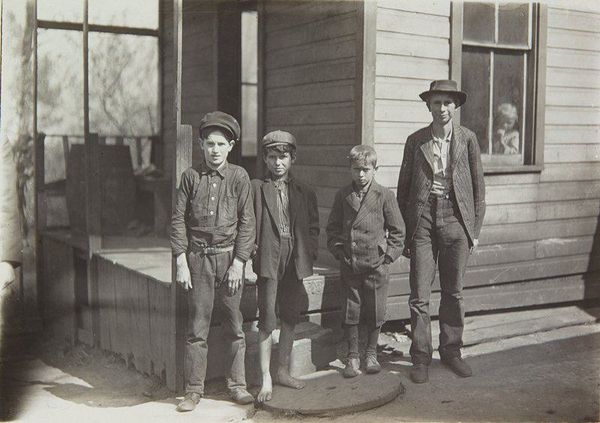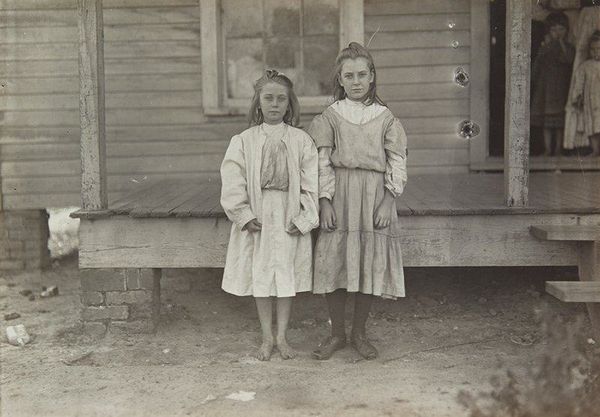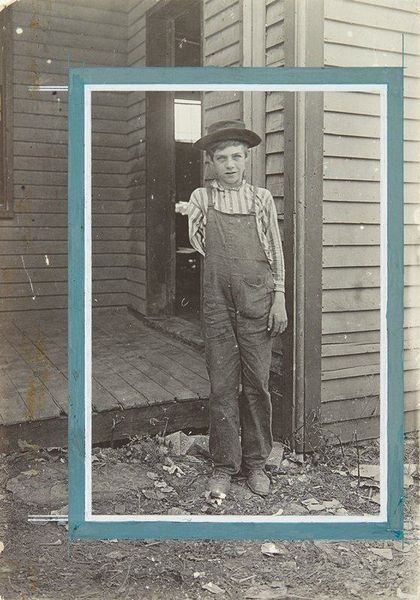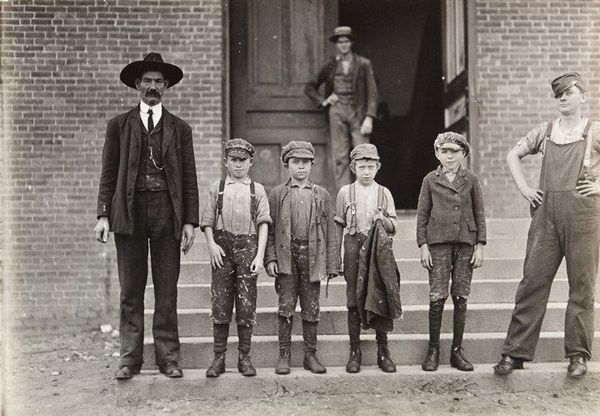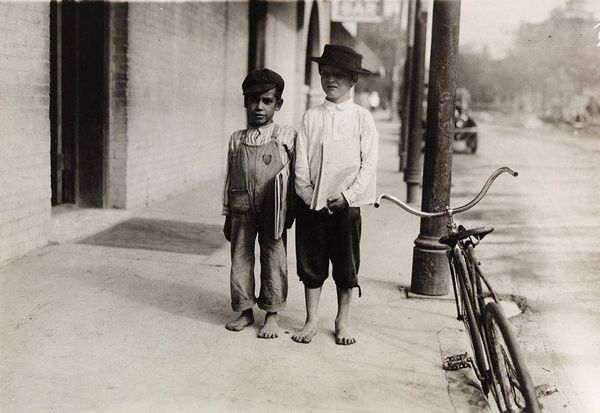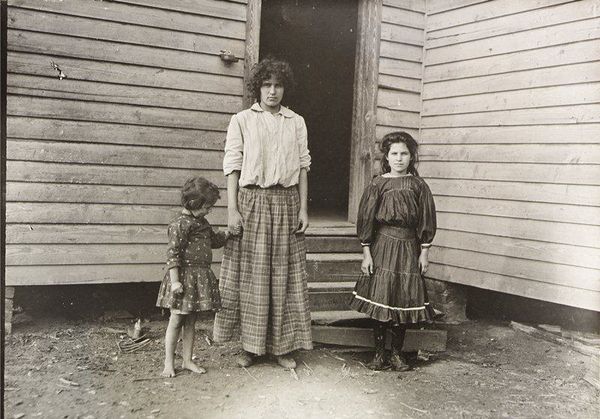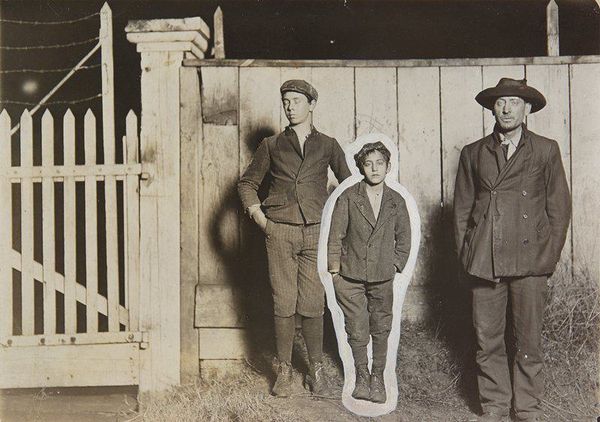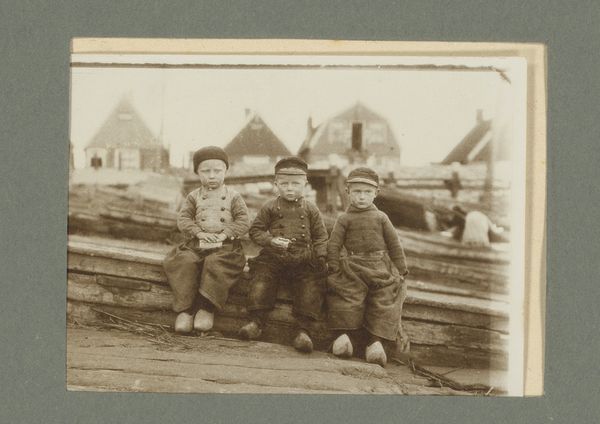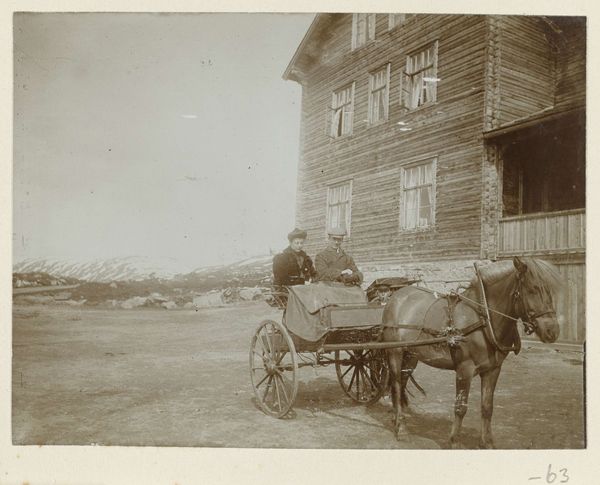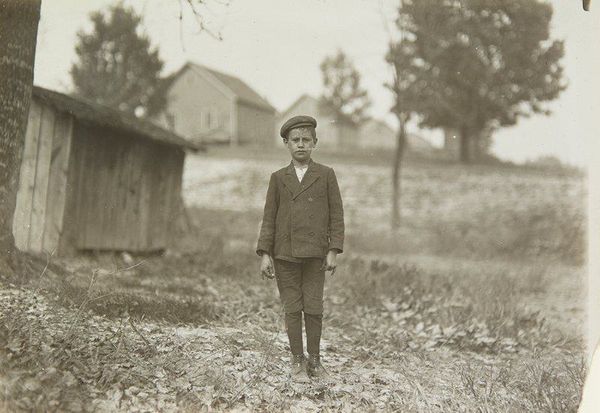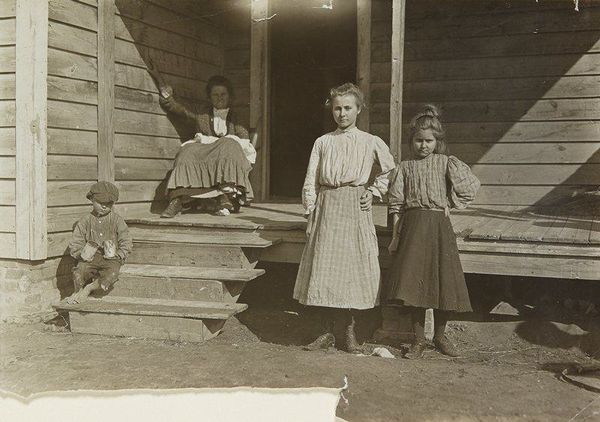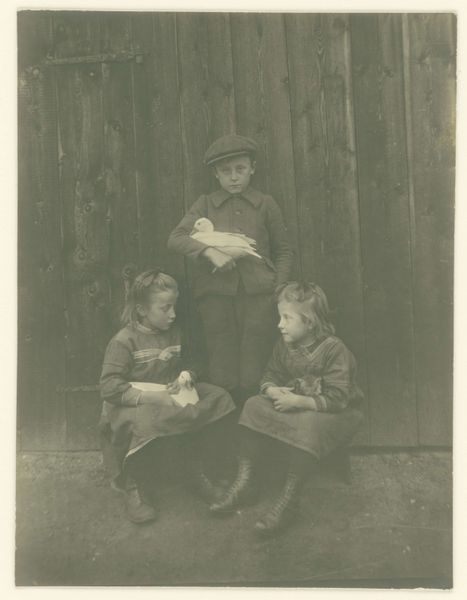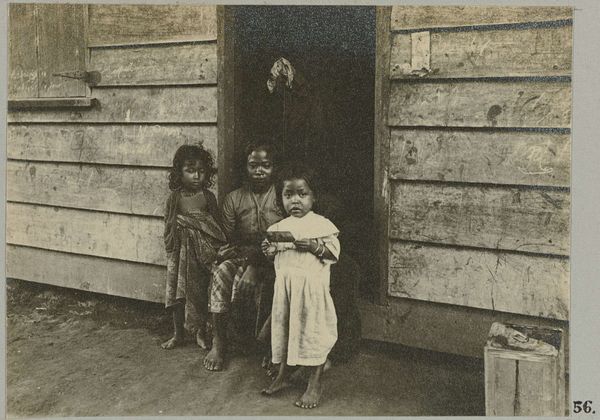
gelatin-silver-print, photography, gelatin-silver-print
#
portrait
#
gelatin-silver-print
#
archive photography
#
photography
#
culture event photography
#
historical photography
#
gelatin-silver-print
#
ashcan-school
#
united-states
#
genre-painting
#
realism
Dimensions: 4 5/8 x 6 5/8 in. (11.75 x 16.83 cm) (image, sheet)
Copyright: No Copyright - United States
Curator: Okay, here we have an untitled work by Lewis Hine, a gelatin-silver print from 1908, held here at the Minneapolis Institute of Art. It presents two young boys in rather formal attire standing outside a modest clapboard building. Editor: It strikes me as an odd portrait, so immediate and a touch melancholic. They’re framed squarely, with the backdrop almost pressing them forward, as if onto the viewer. It’s interesting. Curator: Absolutely. Hine was deeply engaged with social issues, particularly child labor. While this piece isn't explicitly documenting labor, it speaks volumes about childhood in that era. Observe the textures: the rough planks of the house against the relatively polished boots and clothing of the boys. Editor: The tonal range is limited but effective. The grays seem to accentuate the weathering of the wood and the subdued colors of their clothing. Their positioning as well: one boy looks directly at us, his face almost defiant, while the other averts his gaze, retreating slightly into the background. This division is not by chance. It's constructed to subtly tell a story, I'd say. Curator: I couldn't agree more. Hine used these visual cues strategically. It also places this within the context of the Ashcan School movement—a move toward capturing unfiltered glimpses of everyday life, devoid of romanticization. He presents these kids within their actual environment rather than a posed studio setting. Editor: Considering it's a gelatin-silver print, we could further deconstruct the chemical materiality of it. What decisions impacted Hine's selections here? Are the decisions reflecting his conscious goal to use this material for commentary and preservation, or more stylistic expression? Curator: These are valid concerns, the medium offers certain aesthetic qualities and it can contribute to meaning-making within the social or aesthetic project of its author. Perhaps we’ll save it for a follow up visit. But ultimately I think Hine sought to document realities—both raw and strangely beautiful—that demanded attention. Editor: Indeed. In the end, we see a portrait laden with implication—about class, circumstance, and the loss of childhood. It’s a haunting yet essential composition that lingers in the mind.
Comments
No comments
Be the first to comment and join the conversation on the ultimate creative platform.
